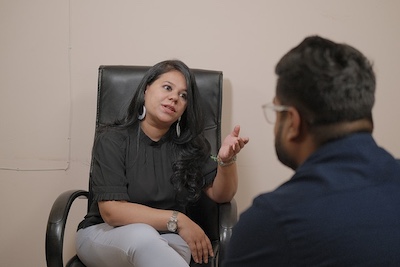Leadership Coaching on the Executive Director Part Two
- Home
- Small Nonprofit Practices
- Leadership Coaching on the Executive Director Part Two
Leadership Coaching on the Executive Director Part Two provides you with another four practices to check your organization against.
As previously, if the wording doesn't seem relevant to your situation, adjust it. Establish a baseline of behavior and measure your improvement in another year's time.
The goal is to intentionally aim for improvment in all areas of the organization.
29. Good Support Staff Allows the Executive Director to Work on Priorities

This is Practice 29 of 80
Good leaders benefit from good assistants and support staff. The leader appropriately delegates and knows how to work on priorities.
Your Executive Director is not crippled in their effectiveness because they have to spend too much time doing things that are better done by someone else.
Generally, if the Executive Director can easily train or find someone else to do routine tasks, it is probably not their priority to be doing it themselves.
- What, if anything, needs to be changed in your operation?
- Can your Executive Director easily let go and delegate well to others?
- Are they working on priorities or getting sidetracked with many jobs that could be better done by someone else?
Why This Practice is Important
If a person can determine and work on priorities, much more can be accomplished.
The Key Concept, Attitude or Action That Drives This Practice
ASSISTANCE
A desire for effectiveness is a good driver.
An Expansive Thought
The partnership of a great leader and an effective executive assistant and other support staff makes for exceptional possibilities.
An Action Point
Leaders working on priorities rise to the top. Have yours?
30. The Board Provides a Supportive
Environment for the Executive Director

This is Practice 30 of 80
Do you have a comfortable environment where the leader can be heard? Are there signs of being overwhelmed, hurting at home or being financially strapped?
Boards and those providing support don’t have to have all the answers but they do need to listen.
It is lonely at the top. Leaders of small, particularly Christian, organizations often remain silent because they believe others will view some of what they might have to say as complaining, weakness, poor management or making accusations.
Make sure you take the time to ask questions and listen in a supportive and genuine way. Listen carefully and you will know what is needed.
- When your ED is feeling alone, isolated, or disconnected, what support is in place for him or her?
- Is your ED feeling abandoned in any way? Do you know?
- How will you address that?
- If you provided a forum for them to say exactly what they wanted to say, would they use it? If not, why not?
- What do you think they would say?
- How can you make such an environment of trust, confidentiality and listening?
Why This Practice is Important
Leaders face personal challenges like anyone else and need a place to be heard.
The Key Concept, Attitude or Action That Drives This Practice
SUPPORT
Leaders that KNOW they are supported are strengthened.
An Expansive Thought
Time, confidentiality and non-judgment will often serve a leader better than silence and lack of listening.
An Action Point
Create a space for real care to be expressed for your leadership.
31. The Executive Director Works with a Seasoned Mentor or Professional Coach

This is Practice 31 of 80
A Coach or mentor is invaluable to the leader. The Executive Director who loves what they are doing and does it well will move an organization ahead at an accelerated pace.
- Is your Executive Director happy and fulfilled? How do you know this?
- Are they taking real satisfaction in what is being accomplished?
When the smile is gone, start asking questions. They may inform you of things that need attending to now.
This is when they can benefit from working with a Coach or mentor in whom they have confidence. A safe environment to express concerns and find ways of articulating them is created.
- Is a regular meeting that solicits the real feelings of the Executive Director happening?
- Does the mentor or Coach they have chosen, effectively know how to give them the best support possible?
- How do you know this? What kind of a track record does this person have?
Why This Practice is Important
Working with a professional Coach produces greater effectiveness.
The Key Concept, Attitude or Action That Drives This Practice
FULFILLMENT
Involvement and satisfaction provide the fuel to keep going.
An Expansive Thought
People at the top of their game use a coach to stay there. Shouldn’t you?
An Action Point
Have someone, preferably a professional leadership coach, work closely with your Executive Director for their personal good and effective leadership.
32. A Process of Executive Director Accountability is in Place

This is Practice 32 of 80
Your accountability review should not merely consist of a report from the particular executive but from those they work with, deal with and serve.
It should gauge both their own and your perception of performance and well-being around a whole host of items. It should be frequent enough to give them the feedback they need and spaced enough not to be intrusive.
- What type of review do you conduct? Who does it?
- Is your review designed to surface a broad range of concerns or only deal with specific areas?
- Has your Executive Director extended permission to you to ask about their personal life, above and beyond professional accountability?
- How do you plan to ask tough questions without being overly intrusive?
- Is the review process written out, understood and agreed to by everyone, well ahead of time?
- Does any review comply with current legislation?
Why This Practice is Important
Business and nonprofits are littered with the executive level wreckage resulting from a lack of accountability. Being accountable provides safety for everyone.
The Key Concept, Attitude or Action That Drives This Practice
ACCOUNTABILITY
A willingness to be openly accountable means more energy will be directed toward the aims of the organization.
An Expansive Thought
If we care for our executive level leadership in tangible and open ways, they will care for us and the things that are important.
An Action Point
Initiate regular reviews that are somewhat less reporting on results and much more reporting on personal and professional well-being. You will learn a lot.
This is the end of Leadership Coaching on the Executive Director Part Two.
To review Part One again, click here.
How Will Your Organization Apply Leadership Coaching on the Executive Director Part Two
Of the four points for review in Leadership Coaching on the Executive Director Part Two, which stands out to you in most need of some changes for your organization?
This is the opportunity to initiate even a few action items that will make your organization, your Executive Director, and your mission, that much more effective.
Contact me here Privacy Policy
© G.E.Wood and Associates. All Rights Reserved in all media.
G.E. Wood and Associates is an international coaching firm registered in Ontario, Canada
142 Pratt Crescent, Gravenhurst, Ontario, Canada, P1P 1P5